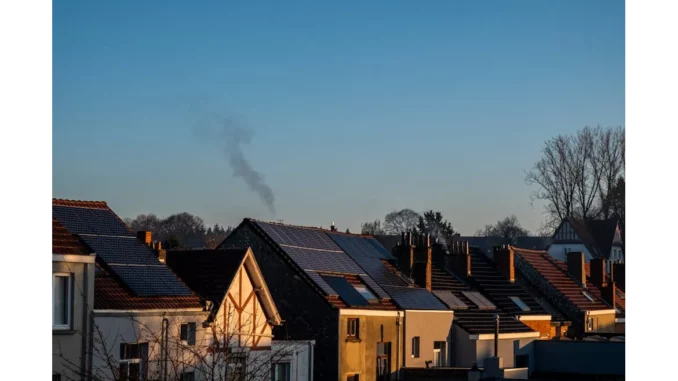
In the heart of York, an 18th-century psychiatric hospital founded by a Quaker in 1792 is undergoing a remarkable transformation. This historic site, known as The Retreat, is set to be converted into 120 energy-efficient homes. As part of this significant endeavour, I had the opportunity to sit down with Thomas Barrett, a senior project manager at the heritage property developer undertaking this ambitious project.
Successful low-energy building design hinges on careful planning. Focus360 Energy can help.
Meeting Thomas Barrett was an enlightening experience. Deeply involved in the redevelopment of The Retreat, his passion for blending history with modern sustainability was palpable. “Our primary goal,” Thomas began, “is to honour the legacy of The Retreat while ensuring it meets the demands of contemporary living.” The Retreat has long been a symbol of progressive mental health care, founded by the Quaker William Tuke in the late 18th century. This establishment pioneered a humane approach to treating mental illness, setting a standard that has influenced psychiatric care globally. “What we are doing now,” Thomas explained, “is giving these buildings a new purpose, without erasing their historical significance.”
Thomas shared that one of the biggest challenges they faced was preserving the architectural integrity of the buildings while installing modern energy-efficient technologies. “We had to be incredibly meticulous,” he said, “ensuring that every alteration was in line with heritage conservation guidelines.” This includes retaining original features like the grand Georgian facades and the intricate interior woodwork, which are being carefully restored to their former glory. The project, led by PJ Livesey, aims to create spaces that promote wellness and tranquillity, both within the homes and the surrounding gardens. “Our plans will give a new lease of life to these stunning buildings that are steeped in history,” said Georgina Lynch, managing director at PJ Livesey. “Our vision for The Retreat plays homage to its heritage with the development designed to create spaces for wellness and tranquillity.”
One of the most exciting aspects of the project is its commitment to sustainability. “We are incorporating a range of energy-efficient technologies,” Thomas noted, “from high-performance insulation and double-glazed windows to solar panels and ground-source heat pumps.” These measures are not only designed to reduce the carbon footprint of the homes but also to lower energy costs for future residents. Thomas walked me through the site, pointing out where these sustainable features would be integrated. “In many ways, the original design of The Retreat was ahead of its time,” he said. “Large windows allow for ample natural light, and the thick stone walls provide excellent insulation. We are building on these features to create homes that are comfortable, sustainable, and full of character.”
The Retreat’s redevelopment is not just about creating homes; it’s about building a community. “We are designing communal spaces that encourage social interaction,” Thomas explained. “There will be shared gardens, walking paths, and areas for relaxation and reflection.” These elements are inspired by the original ethos of The Retreat, which emphasised the importance of a serene environment in promoting mental health. The project also includes plans for a wellness centre, which will offer a range of services to residents. “This is a nod to The Retreat’s history,” Thomas said. “We want to continue its legacy of promoting well-being, albeit in a modern context.”
Of course, such a complex project does not come without its challenges. “One of the biggest hurdles has been navigating the planning permissions and heritage regulations,” Thomas admitted. “There are numerous stakeholders involved, from local authorities to heritage bodies, and each has their own set of requirements.” Despite these challenges, the project is progressing well. “We’ve received a lot of support from the local community and heritage organisations,” Thomas said. “People are excited to see these historic buildings being brought back to life in a way that respects their past and secures their future.”
As our conversation drew to a close, Thomas reflected on the broader significance of the project. “The Retreat is a powerful reminder of how far we’ve come in terms of mental health care,” he said. “By transforming it into sustainable homes, we are not only preserving its history but also ensuring it continues to serve the community in a meaningful way.” Walking away from The Retreat, I couldn’t help but feel inspired by the vision and dedication of Thomas and his team. Their work is a testament to what can be achieved when we honour our past while looking to the future. The conversion of The Retreat into sustainable homes is more than just a building project; it’s a symbol of progress, resilience, and the enduring power of community.


Be the first to comment